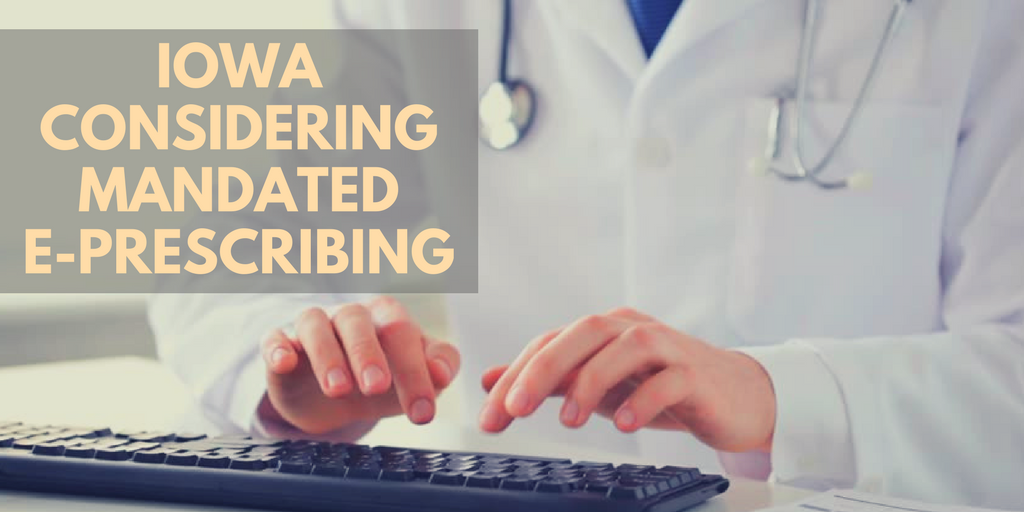
Iowa is the latest state to consider legislation that would require electronic prescribing. The Iowa Board of Pharmacy suggested Senate Study Bill 30741 which would require all prescriptions to be sent electronically. Like several other states with similar enacted and proposed legislation, lawmakers in Iowa hope to curb the opioid epidemic with this bill.
Executive director of the Iowa Board of Pharmacy, Andrew Funk, informed senators that currently 65% of Iowa prescriptions for non-addictive drugs are sent electronically, but only 9% of prescriptions for addictive drugs are electronic. This leaves a lot of room for fraudulent prescriptions.
Iowa Senator Tom Greene, a former pharmacist, is all too familiar with forged paper prescriptions. "A patient presented me with a prescription for sleeping medication-a controlled substance," said Greene. "And the doctor had ordered ten tablets. Well, the patient changed the one-zero to a four-zero. There are cases like that out there, and again electronic prescribing and the electronic transmission of that information is very accurate." Lawmakers hope that in addition to preventing phony prescriptions, it would also help with mistakes caused by handwritten prescriptions. Prescriptions sent electronically eliminate the possibilities for patients to alter them, as well as remove the potential for pharmacists to misinterpret illegible prescriptions.
The bill allows for providers to ask for temporary exemptions if they aren’t able to meet the requirements in time, but any prescriber without an exemption would be subject to $250 fines per violation of the law, up to $5,000 per year. There are also exemptions for prescriptions for patients in nursing homes, long-term care facilities, or jail, as well as veterinary prescriptions. In addition, the bill states the requirements do not apply to compound prescriptions containing two or more components and prescriptions requiring “information that makes electronic submission impractical, such as complicated or lengthy directions for use or attachments.”
As the bill is written now, it would begin July 1, 2019. Some lobbyists, however, feel that this is too soon especially for rural hospitals and physicians. They are pushing for the date to moved to July 1, 2020. Senator Greene and two other senators on the subcommittee were said to informally agree to a compromise of January 1, 2020.
One of the great things about our stand-alone web-based e-Prescribing products is that there is not a lot of setup needed. As long as a prescriber has a device that can access the internet (computer, tablet, or phone), they can send their prescriptions electronically. While sending controlled substances electronically does require a 2nd device to electronically sign the prescription, it is as simple as using a phone or key fob. Most prescribers can get setup and start e-Prescribing with MDToolbox in just a matter of minutes. There is no need to stress about putting complex systems in place or wait until the deadline. To see how quick and easy it is, sign up for a free trial or request a demo here.
1. https://www.legis.iowa.gov/legislation/BillBook?ba=SSB3074